You can trust Cyclingnews
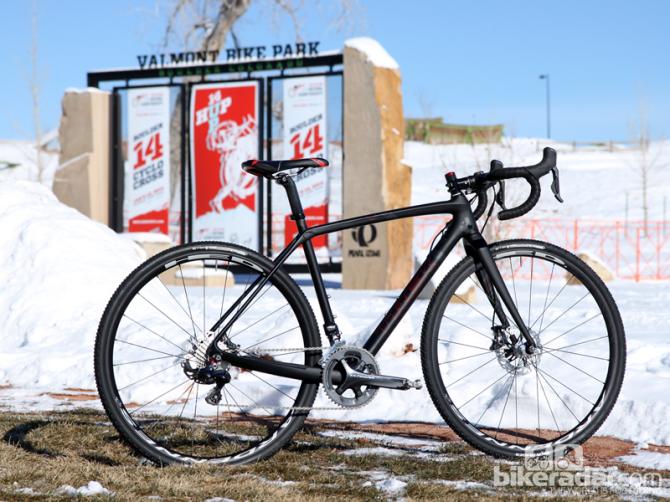
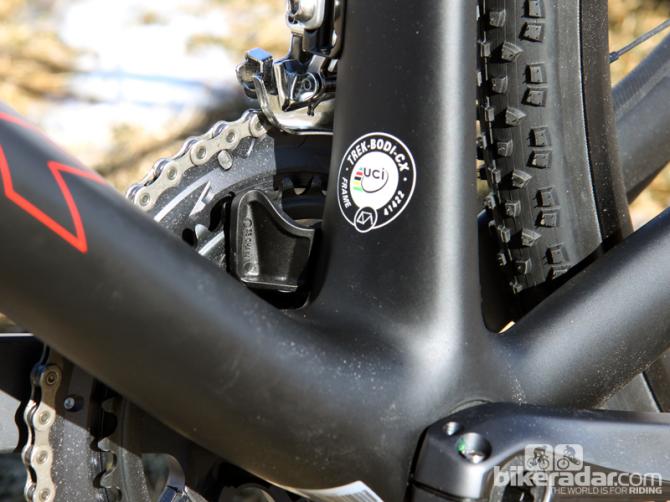

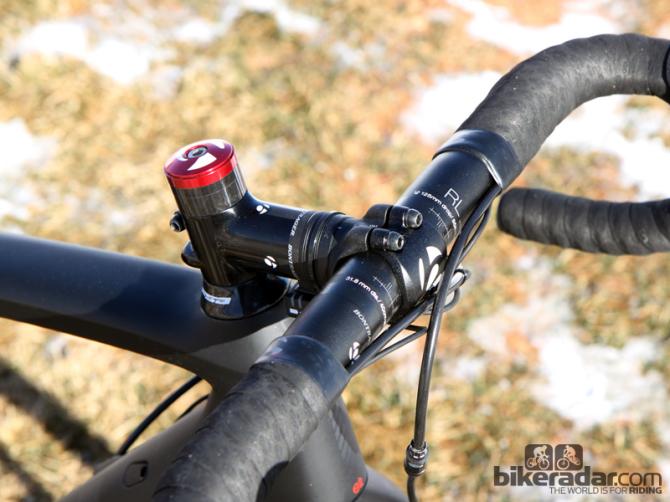
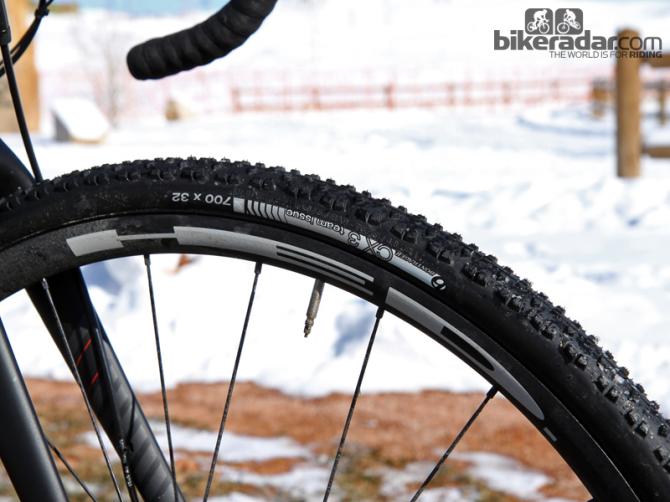
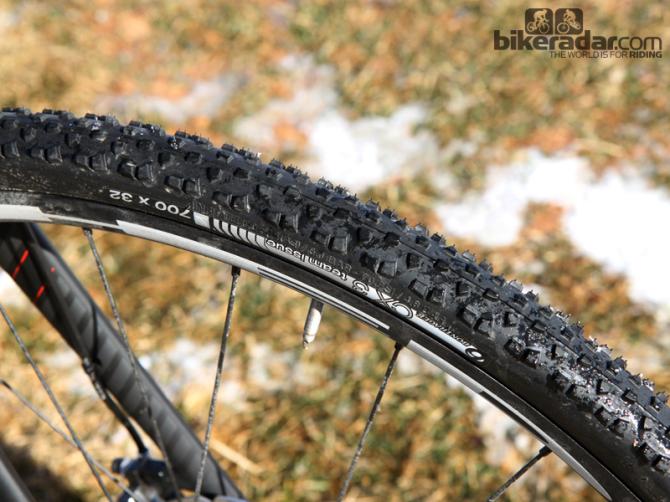
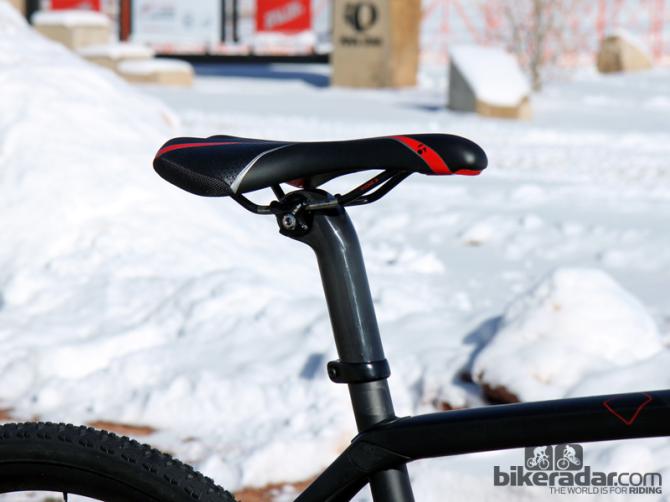
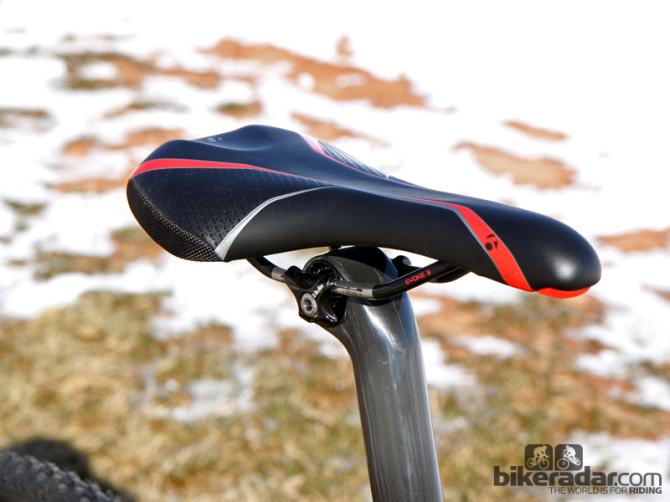
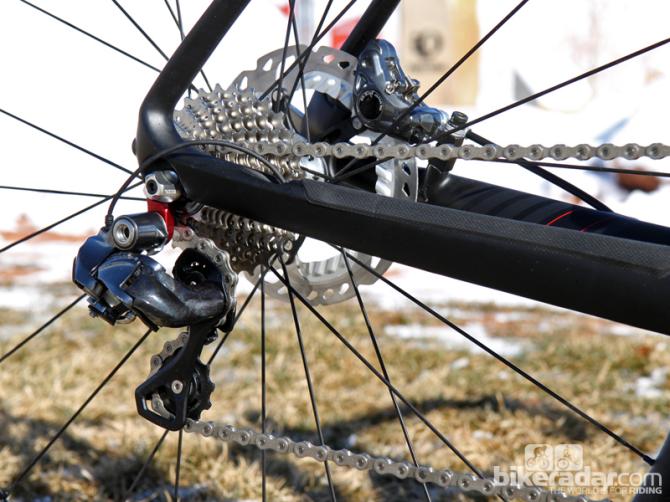
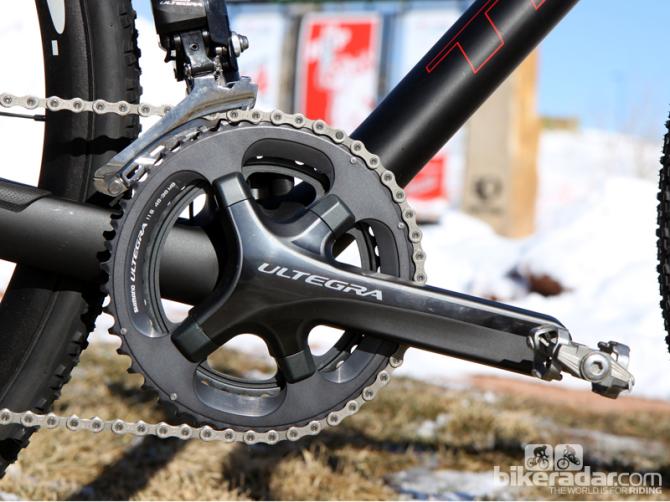
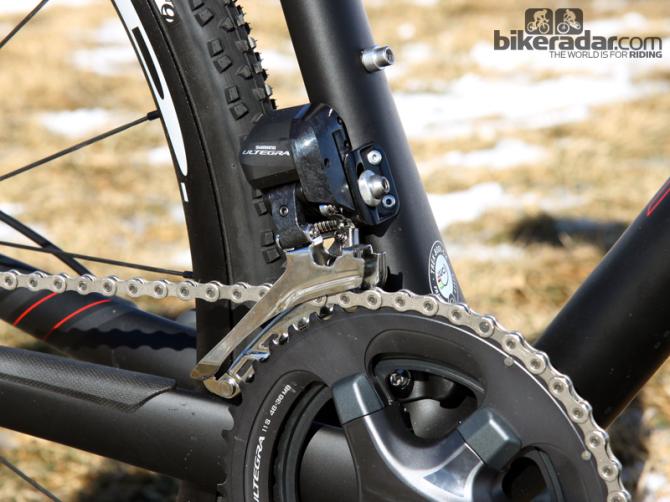

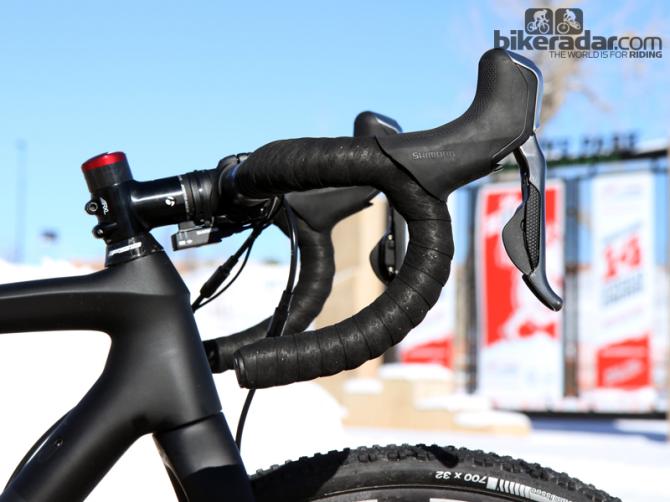
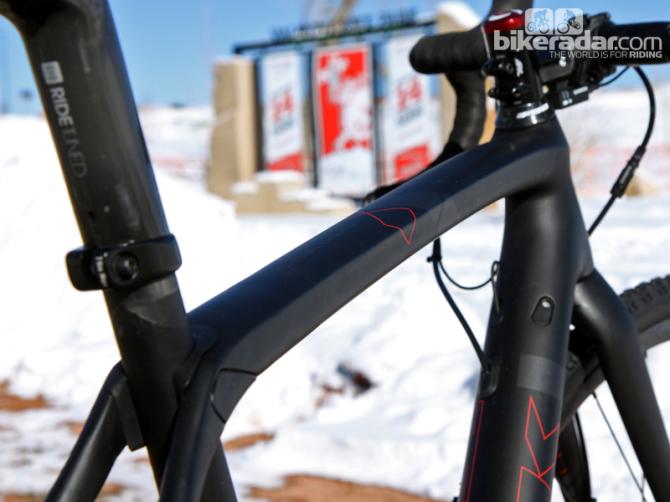

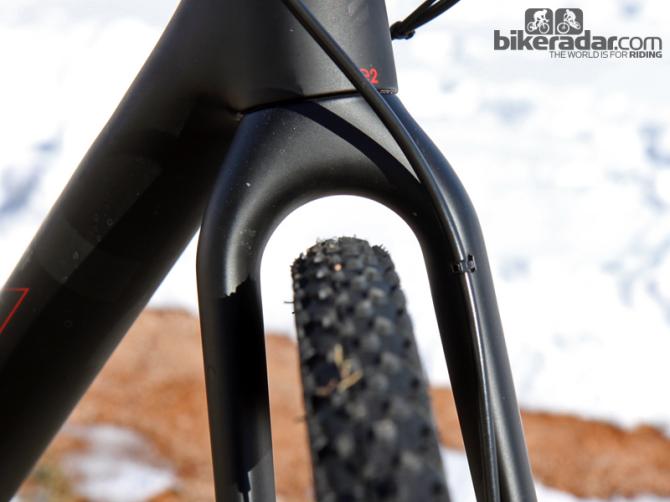

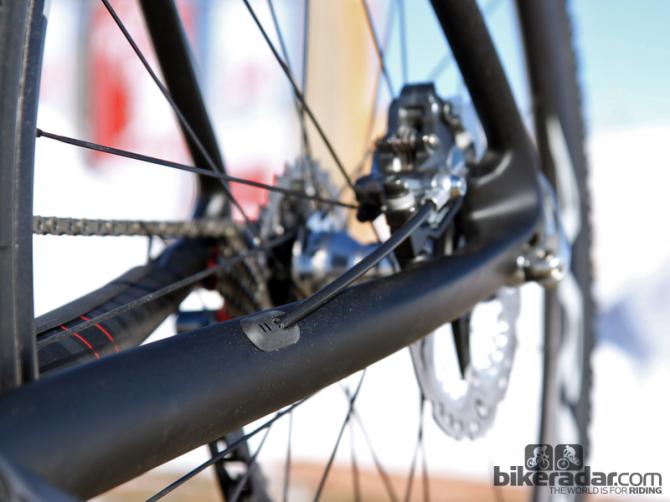
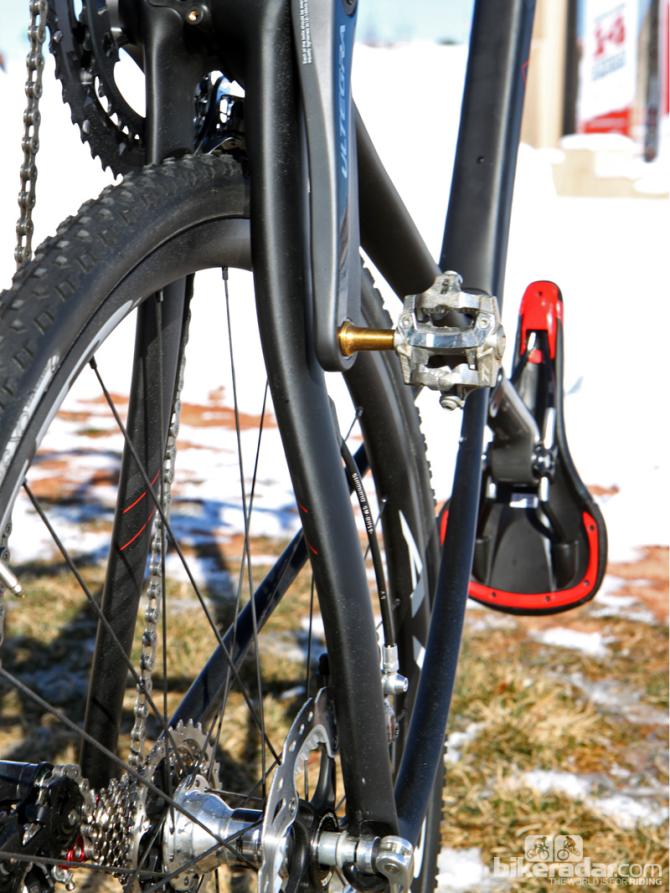
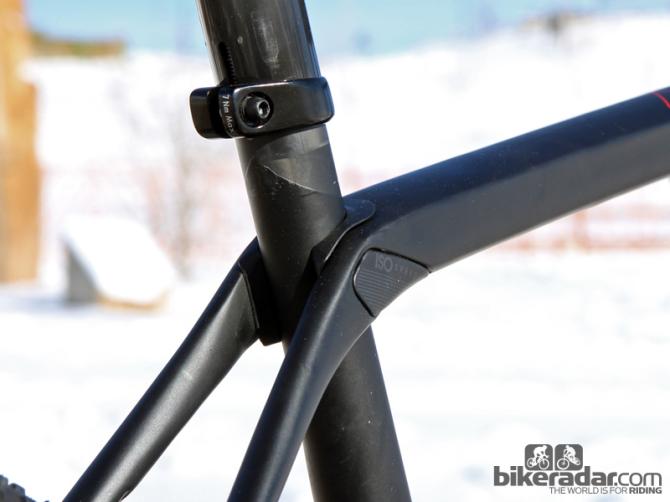
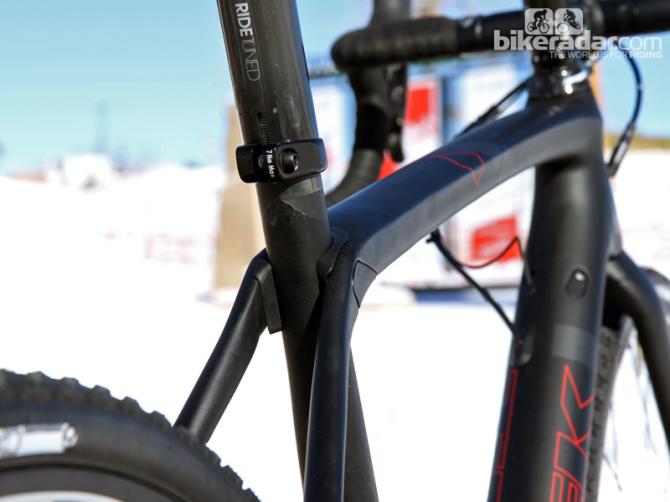
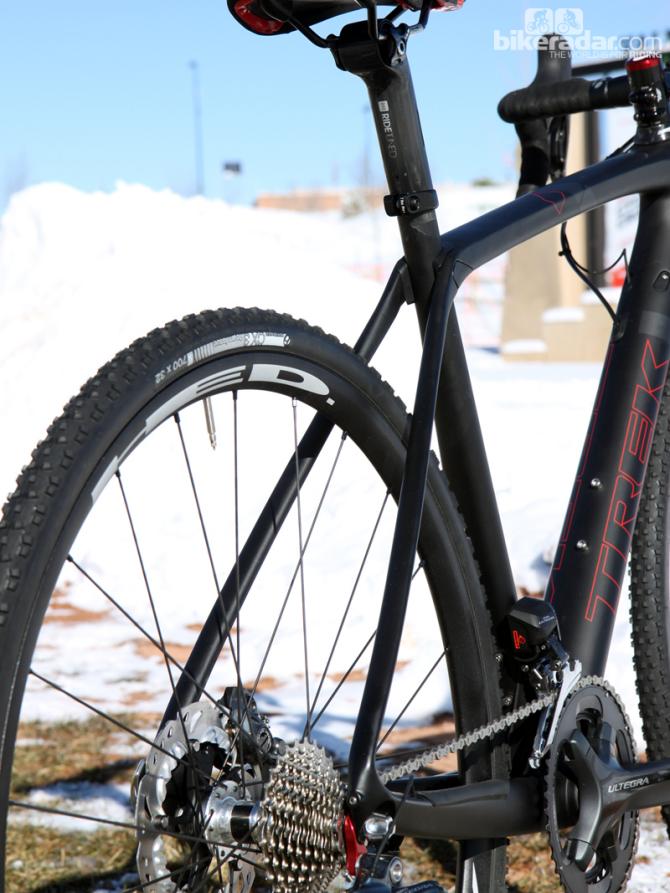



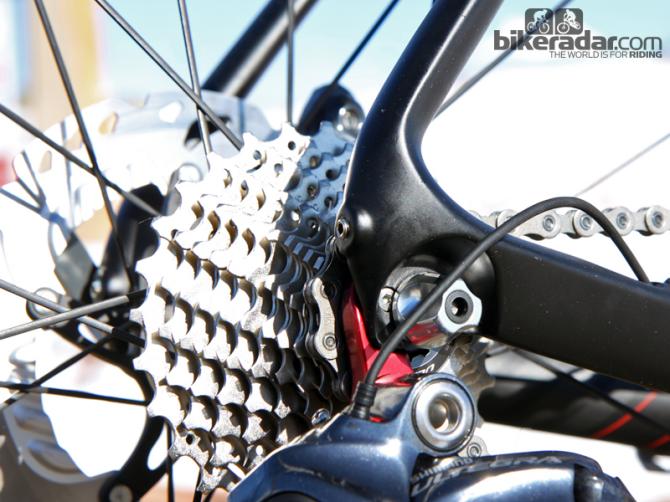

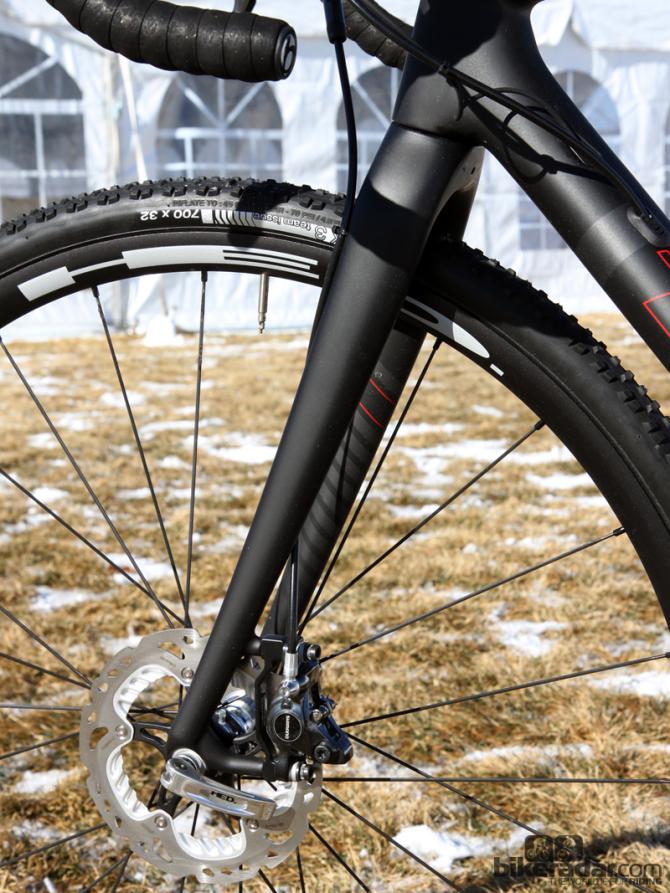
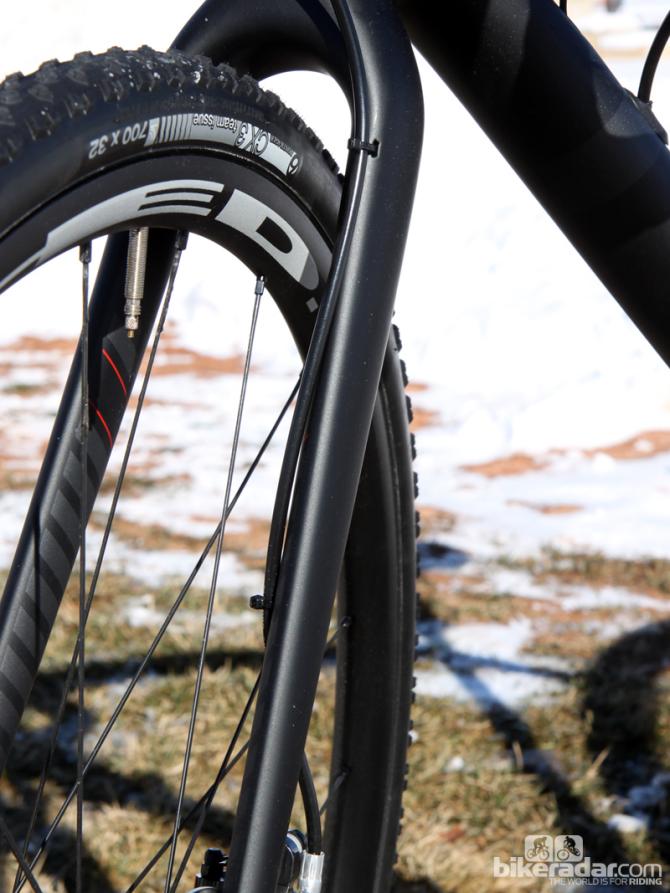

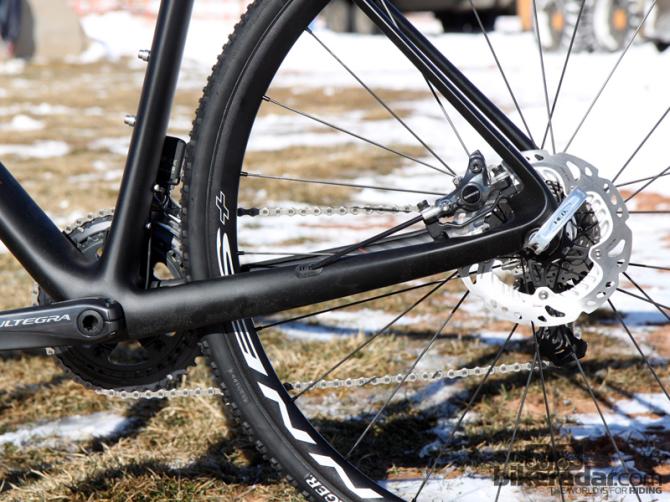
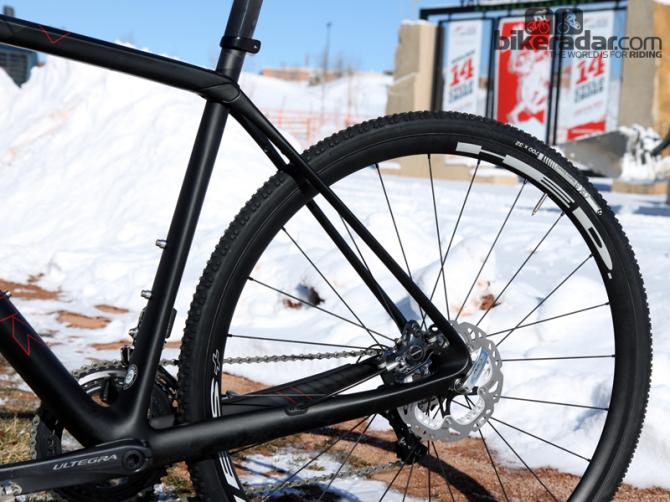
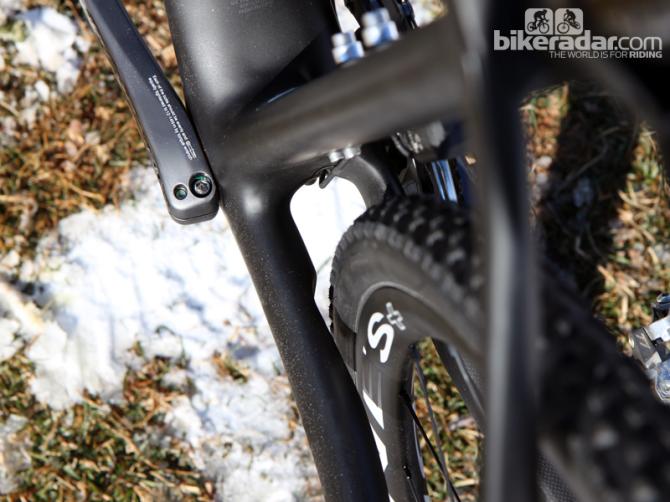


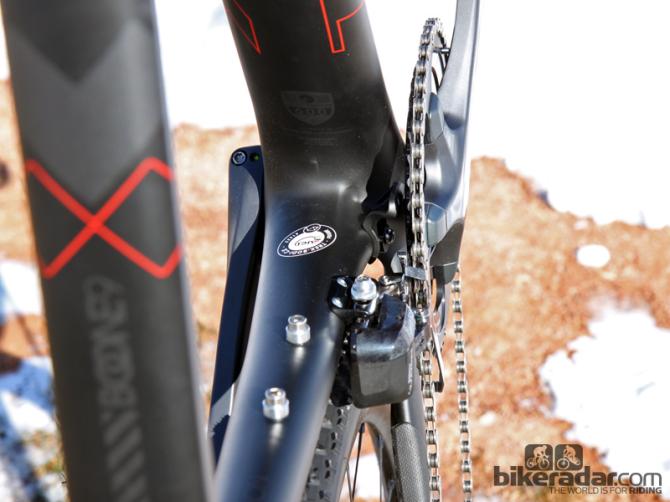
This article originally published on BikeRadar
One of our first thoughts after we first tried Trek's Domane endurance road bike was that its bump-leveling IsoSpeed 'decoupler' would be fantastic on a cyclo-cross machine. That day has now come with the introduction of the Boone. BikeRadar got an exclusive first ride on the top-end Boone 9 Disc model and after racing it at the 2014 US Cyclo-cross Nationals, we can confidently declare that this thing is a legitimate game changer.
Ride and handling: smoother = faster
We took delivery of the bike on a Saturday and raced it at the US National Championship just four days later on what turned out to be a very bumpy, slick and technically challenging course. Though the Boone would likely be a fine machine without IsoSpeed, it's that unique mechanical pivot at the seat cluster that defines and absolutely dominates this bike's ride and performance characteristics.
In combination with the integrated seatmast, IsoSpeed allows the entire seat tube to flex much more than usual under impact. The affect on comfort, rider freshness, pedaling efficiency, and traction is real and dramatic. It's akin to running clinchers with 30psi versus tubulars at 25psi – it's that profound.
The rear end of the Boone isn't just less jarring; it's silly smooth. On one section of the course that was straight but disruptingly bumpy, we were able to stay comfortably seated and continue to apply power, whereas we would have been forced to stand and/or coast on other 'cross bikes. This, of course, pays dividends in terms of speed, but it also left us feeling fresher at the end of the race than we expected. And in the specific case of cyclo-cross, the slight give in the seatmast made for gentler remounts, too.
Not only were we able to more consistently apply power, but we also discovered benefits in terms of rear wheel traction. One particularly tricky corner – the treacherous 'Pete's Plunge' – was very off-camber, slick, and littered with grassy lumps covered in melting snow and mud. Grip and stability were of the utmost importance here and the Boone supplied both in spades. Even with not-so-supple clinchers installed, all we had to do was stick a leg out, maintain weight on the saddle, and basically rail it while many others around us were forced to tip-toe through the corner to avoid sliding out.
We can't really think of any drawbacks to incorporating the IsoSpeed decoupler, either. According to Trek, the system only adds about 50g, there's no undue bounciness, and no negative affect on overall frame stiffness that we could notice. Riders who might be worried that the Domane's ultra-smooth ride might be a little too soft on the Boone shouldn't worry, either, as the pivot point has been repositioned to be more inline with the seat tube to firm it up slightly while still being incredibly effective.
Just as we found on the Domane, though, there is a slightly unbalanced feel as the front end just doesn’t level out the ground as well as the rear – which isn't surprising since there's no mechanical pivot like there is out back. Nevertheless, Trek has still done a very good job making the most of a conventional setup with dramatically curved fork blades terminating in rear-reaching aluminum tips to maintain a proper rake. While the impact isn't as big, the slender fork does still offer a notably smooth ride when compared to most tapered carbon 'cross forks – particularly ones with huge crowns and oversized blades.
Even ignoring the fantastic IsoSpeed benefits, there's a lot to like here. Frame geometry is wholly lifted from the aluminum Crockett and it's fantastic. The low bottom bracket is stable and confident through corners, the front-end geometry is both agile at low speeds and calm at high speeds, and in general the bike seems more than happy to attack slippery corners.
Overall stiffness is very good, too. The Boone is quick to respond when you apply the power and the solid front end contributes to the predictable handling, especially when the ground is slick.
Mud clearance is also generous throughout thanks to the widely set chain stays and the broad stance of fork crown. There are no bridges on the seat stays or chainstays, either, and there's absolutely no shelf whatsoever behind the bottom bracket on which mud and debris can collect. With true-to-width 32mm tires installed, we measured no less than 15mm of space around the fork and seatstays and a still-ample 10mm between the sidewalls and chainstays.
Frame: a Domane adapted for the dirt
In many ways, the Boone's carbon fiber frame is simply a Domane that has been rejiggered for use on a 'cross course with extra clearances, revised geometry, and the aforementioned modified IsoSpeed pivot leverage ratio. Of course, our disc-specific test bike also adds post mount tabs at the fork and on the chainstay.
Many of the tube profiles are quite similar, too, with mostly organic shapes throughout and few abrupt edges to speak of.

The Boone has clean lines and a shoulder-friendly top tube
Not surprisingly, the Boone also has similar frame features, including an extra-wide BB90 bottom bracket shell and tapered 'e2' 1 1/8-to-1 1/2in head tube – both with drop-in bearings – Trek's usual no-cut integrated seatmast, and convertible internal routing that can be used with either mechanical or electronic drivetrains.
Trek has taken some impressive steps toward versatility and component integration, too. In addition to the hidden full fender mounts and dual bottle bosses (which isn't always a given on top-shelf 'cross bikes), there's even a dedicated pocket inside the bottom of the seat tube to affix an internal-style Shimano Di2 battery. Given that the charge port for Shimano's latest electronic drivetrains now conveniently resides on the box beneath the stem, most users will likely never need to access that Li-ion pack at all – and if they do, they'll just have to remove the crank and bottom bracket cover to get to it.
We do have to take issue with Trek's claim that the Boone frame is "weatherproof". While the integrated seatmast design does eliminate the usual entry point for water, the access ports for the brake and derailleur lines are hardly hermetically sealed. Water will eventually get into this thing, especially if you plan on regularly using a power washer, but at least there's a drain hole down at the bottom.
We haven't had a chance to tear down our test bike for actual frame and fork weights, but Trek claims 1,000g for the former and 400g for the latter. Our disc-specific fork will certainly weigh more, however, given the aluminum steerer instead of the rim brake version's full carbon fiber construction.
Equipment: Awesome Ultegra Di2 transmission, fantastic brakes, great wheels
Our top-end Boone 9 Disc tester came well-equipped for 'cross duty with a Shimano Ultegra Di2 electronic transmission, the company's new R785 hydraulic disc brakes, and a full complement of Bontrager finishing kit. Surprisingly, though, the Bontrager was not applied to the wheels, which instead come from HED in the form of its fantastic Ardennes Plus Disc tubeless-ready clinchers.
Much as we love Di2 on the road, we're of a slightly mixed opinion for 'cross. As usual, shifts are robotically precise and consistent regardless of conditions. Simply push the button and you're rewarded with a perfect shift every time.
That being said, the small buttons are especially tough to feel with full-fingered gloves – more so when it's cold or bumpy – and there's still barely any tactile feedback, particularly since the shifts themselves are so flawlessly (and fluidly) executed. The Ultegra Di2 variant is also a bit heavy, which generally doesn't create much of an issue until it's time to pick the bike up for barriers and run-ups – which in the case of the US National Championship course was 3-4 times per lap.
Total weight for our 52cm test sample was 8.08kg (17.81lb) without pedals – hardly a boat anchor but not nearly as light as it could be with a mechanical drivetrain.
We were quite willing to deal with that slight increase in weight, however, as it's currently the only way to get into Shimano's utterly amazing R785 hydraulic disc brakes. Just as with the company's off-road brakes, these offer a light and silky smooth lever feel, outstanding power, and fantastic fingertip control that allowed us to consistently flirt with the limits of traction. They also run virtually silently, even when wet, and given the full-hydraulic design self-adjust for pad wear (which is critical for 'cross racers who regularly tackle wet conditions). Trek specs 160mm rotors front and rear but both ends will accept 140mm ones.
The HED wheels may have been a surprise but they're a pleasant one. The wide-profile rims (20mm internal width) provide a great foundation for bigger tires, they offer confidence-inspiring stiffness, and the front and rear grease ports are a godsend after soupy races.
The matching Bontrager CX3 tires, however, were more of a mixed bag. On the one hand, the aggressive tread pattern is awesome in slippery conditions with stout knobs that bite hard even when there's little traction to be had. However, the casing is surprisingly stiff – and thus, noticeably slow-rolling – for a 120tpi tire and we expected them to measure wider than their 32mm printed width given the extra-wide rims on which they were mounted.
Also, while we applaud Trek for including tubeless-ready wheels, the tires use standard tube-type beads and don't readily seal. We had to add a second layer of Gorilla Tape on top of the stock adhesive rim films in order to get a reliably tight fit. Thankfully, tires are such a location- and conditions-specific item that you'll likely need to switch to something else anyway.
Otherwise, the rest of the Bontrager gear do their respective jobs competently and without complaint. The Race Lite IsoZone aluminum bar features a comfy bend and genuinely effective under-tape foam padding, the matching forged aluminum Race X Lite stem is suitably stiff and secure, and the Evoke 3 saddle is reasonably light and comfy – solid and dependable stuff all around.
At least for now, UK customers will unfortunately be limited to the mid-range Boone 5 Disc (£2,400) complete bike and the rim brake-specific frameset (£1,750).
The verdict: Only once in a great while does a bike come along that truly changes the game. The new Boone does just that. The IsoSpeed 'decoupler' offers an uncannily smooth ride that no other 'cross bike can match at the moment, and the performance benefits it imparts are real and significant. While we have some issues with the spec, they're relatively minor and don't significantly take away from what is otherwise an utterly incredible bike for hitting the barriers.
Price: US$6,299
Weight: 8.08kg (17.81lb, 52cm, complete, without pedals
Available sizes: 50, 52 (tested), 54, 56, 58, 61cm
Highs: IsoSpeed 'decoupler' offers amazing ride quality and traction benefits, great geometry, precise Di2 transmission, awesome full-hydraulic disc brakes, solid workhorse wheelset
Lows: A bit heavy, slow-rolling and narrow tires
BikeRadar verdict: 5 stars
More information: www.trekbikes.com
Complete bike specifications
Frame: Trek Boone Disc
Fork: Trek IsoSpeed Cross carbon disc
Headset: FSA Orbit integrated, 1 1/8-to-1 1/2in tapered
Stem: Bontrager Race X Lite
Handlebars: Bontrager Race Lite IsoZone
Tape/grips: Bontrager Gel
Front brake: Shimano BR-R785 hydraulic disc w/ 160mm SM-RT99 Freeza rotor
Rear brake: Shimano BR-R785 hydraulic disc w/ 160mm SM-RT99 Freeza rotor
Brake levers: Shimano STI Dual Control ST-R785
Front derailleur: Shimano Ultegra Di2 FD-6870
Rear derailleur: Shimano Ultegra Di2 RD-6870
Shift levers: Shimano STI Dual Control ST-R785
Cassette: Shimano Ultegra CS-6800, 11-28T
Chain: Shimano Ultegra CN-6800
Crankset: Shimano Ultegra FC-6800, 46/36T
Bottom bracket: Trek BB90 integrated
Pedals: n/a
Wheelset: HED Ardennes Plus Disc
Front tyre: Bontrager CX3 Team Issue, 700x32c
Rear tyre: Bontrager CX3 Team Issue, 700x32c
Saddle: Bontrager Evoke 3
Seatpost: Bontrager Ride Tuned Carbon seatmast